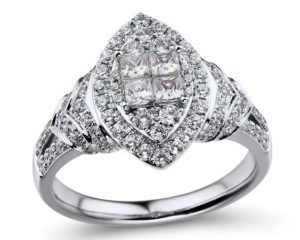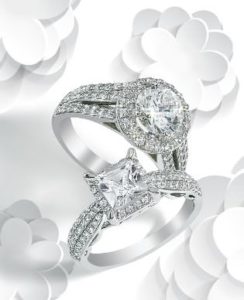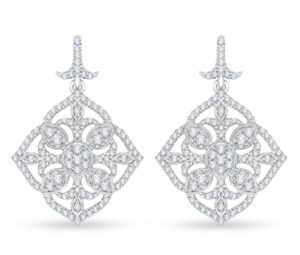Understanding Millennials
The quest was on throughout JCK Las Vegas to understand millennials. The topic of many seminars, workshops and keynote speeches during the show, everyone in the industry is trying to figure out how to capture today’s biggest, most diverse, and college educated generation of our time.
 Jason Dorsey, bestselling author, market analyst and millennial authority (a millennial himself as well), lead a spirited presentation for the Plumb Club at JCK to help jewelers better communicate with millennials. “In the workplace we’re flooding in, in the marketplace we’re the future. Whoever wins us now, wins big.”
Jason Dorsey, bestselling author, market analyst and millennial authority (a millennial himself as well), lead a spirited presentation for the Plumb Club at JCK to help jewelers better communicate with millennials. “In the workplace we’re flooding in, in the marketplace we’re the future. Whoever wins us now, wins big.”
At nearly 80 million strong in the U.S., millennials are the fastest growing generation in the workforce, and as consumers will spend over $1 trillion, out spending baby boomers by 2017. “Of any clients with whom you could win their trust, my generation has the greatest lifetime value,” says Dorsey. “We’re the No. 1 generation to refer our friends. We’re the market sweet spot because we have no established loyalty. We’re up for grabs.”
Millennials Are Different
Through his Center for Generational Kinetics, Dorsey discovered today’s 20-year-olds are three to five years behind other generations in work and life experience. “This has nothing to do with potential and everything to do with the path my generation is taking. We’re graduating college later, entering the workforce later, getting married later, having kids later. All these things have shifted back and the experience goes with them. It changes how you recruit us, motivate us, and market to us.”
Millennials have a wholly different approach to life, careers and relationships compared with previous generations, concurs Jean-Marc Lieberherr, CEO of the Diamond Producers Association. “With more experience of divorce, and having grown up through a technological revolution, where superficial relationships via social media are the norm, they’re getting married later, if at all. They’re also comfortable forging their own paths, rejecting social conventions if they don’t resonate personally. These include engagement rings and anniversary gifts, which were formerly the focus of diamond marketing.”
Considering this, the “Real is Rare” campaign DPA is launching in September via digital platforms, aims to shift perceptions from diamonds commemorating specific milestones and social rituals to them marking genuine moments chosen by the individual. It taps into millennials’ sense of individuality and search for “real” moments in a virtual world that are as rare and precious as a diamond.
Lifestyle Aspirations
The jewelry industry has been dependent on bridal, but marriage is changing dramatically, says Todd Wolleman of Color Craft, New York. “We need to take a hard look at how we can capture customers before/despite marriage.” He notes that millennials are less into brands for brand sake, so brands must re-imagine what they are in stories that feel authentic to consumers.
 Corinna Bhasin, F.D. Worldwide Merchandise Group, New York concurs that the challenge is in making jewelry/diamonds relevant as a lifestyle aspiration. “Millennials are not thinking about diamonds. The engagement ring is no longer the first jewelry purchase. We need to rethink how to market to millennials.” Shyam Jagirdar for Rosy Blue, New York advocates the industry find a way to get diamonds into the millennials way of life starting at age 16.
Corinna Bhasin, F.D. Worldwide Merchandise Group, New York concurs that the challenge is in making jewelry/diamonds relevant as a lifestyle aspiration. “Millennials are not thinking about diamonds. The engagement ring is no longer the first jewelry purchase. We need to rethink how to market to millennials.” Shyam Jagirdar for Rosy Blue, New York advocates the industry find a way to get diamonds into the millennials way of life starting at age 16.
We’re not looking to reinvent the wheel, what’s most important for jewelers is to convey the story, and how they do it matters more than the product, tells Jeffrey Cohen, vice-president of sales, KGS Jewels, New York. He notes that while there’s a segment of the market that wants color, alternative metals/materials, and unique designs, the majority wants classic styles with a twist.
Selling diamonds to millennials is also a question of adjusting the product offering for consumers who have less to spend than their parents, and a more casual approach to wearing jewelry, advocates Marshal Cohen, chief industry analyst at the market research firm NPD Group. “The adjustment might include using smaller stones and putting less emphasis on the 4Cs of diamond evaluation.”
Digital Dominance
It’s about creating an experience that millennials can visualize of how happy they will feel owning and wearing your jewelry, says Lori Kluempke, senior vice president, Prime Art & Jewel, Dallas. “The millennial customer is loyal and will continue to come back to you if they trust you and feel you have special items. You have to have salespeople that are friendly and knowledgeable, not pushing a hard sell but educating customers.”
Social media and video are key tools in helping jewelers tell stories customers can relate to and feel inspired, which helps to sustain and grow a successful business, hails Crystal Oyler, marketing coordinator for Alison and Ivy, a Fantasy Diamond brand in Chicago. She cites SnapChat the fastest growing social media platform with millennials. “Millennials may not be your customer now, but sometime they will be and if they’re exposed to your brand early and you nurture them, there’s a better chance they’ll buy from you when they’re ready.”
Undoubtedly, jewelers need a great website to get customers in the store, says Neil Shah, Shah Luxury, New York. “Consumers research online, visiting at least a handful of websites and searching opinions on social media. All this messaging working in tandem help consumers to make that connection.”
Having a digital footprint also helps jewelers track market trends. “Our research shows conflict free, sustainability and innovative technology are key values to those who find us through search,” tells Monica McDaniels for Chatham, the San Marcos, California lab created gem brand. “Millennials are doing their research to see who carries lab grown gems and what products are available.”







